Best iPhone microphones 2026: Top picks for mobile recording, vlogging and video conferencing
Transform your iPhone or iPad into a studio with these mics from Austrian Audio, Shure, Teenage Engineering, Zoom, and more…
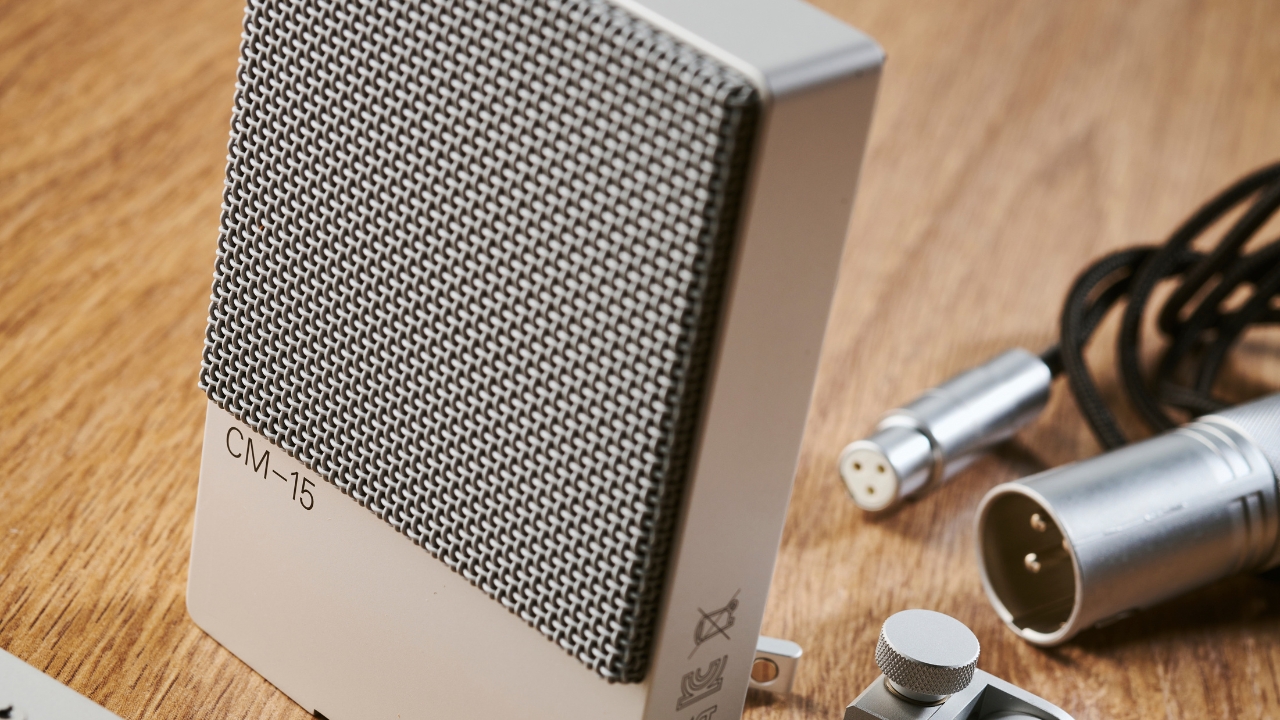
Even though you may be able to treat your smartphone as an all-in-one creative suite, you’re still hamstrung by the limits of an ultra-small-diaphragm built-in condenser mic and a lack of monitoring flexibility. Investing in one of the best iPhone microphones, then, can help you unlock the true power of your iPhone while upgrading your audio captures in the process.
There are different types of iPhone mics for different applications, from lavalier-style mics for capturing clean vocals in the field to fully-fledged studio-quality condenser mics and beyond. In this guide, we’ll show you some of the best microphones for iPhone across the board, as well as highlight some of the features and functionality you should be looking for when making your decision.
If you want to do some more research before you purchase, then make sure to have a look at our FAQs at the bottom of this article. To see the best external iPhone microphone available right now, just keep scrolling.
Best iPhone microphones: The quick list
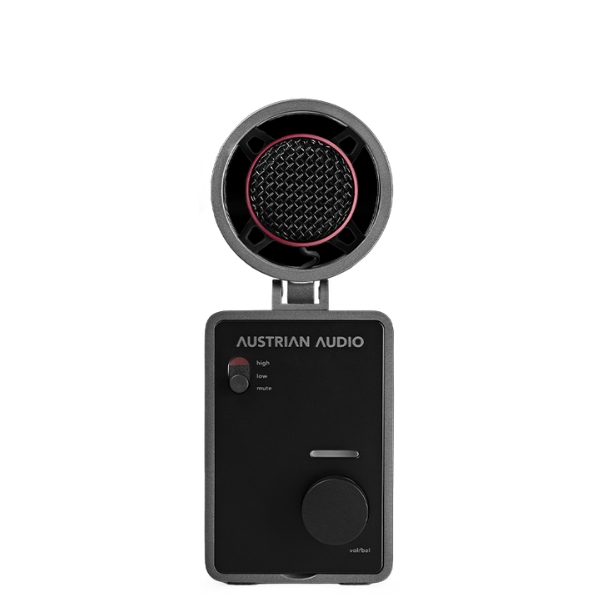
This all-in-one peripheral recording studio is a fantastic piece of kit for practically any audio undertaking. The built-in condenser is versatile all on its own, but an additional input allows you to record two sources – or even in stereo.

Don't want cables cluttering up your creative space? The Rode Wireless GO II is used by the BBC, so that gives you some insight into its superb quality audio and pro features.

Shure’s MoveMic One is the wireless lavalier of your minimalist dreams. It’ll record straight to a proprietary app on your phone, no wires or awkward receiver concealment needed – giving you clean shots for your vlogs.

If you need to turn your smartphone into a full-on video rig, the Sennheiser MKE 400 MKII is based on a legendary DSLR mic, and comes with a shock mount and windshield.
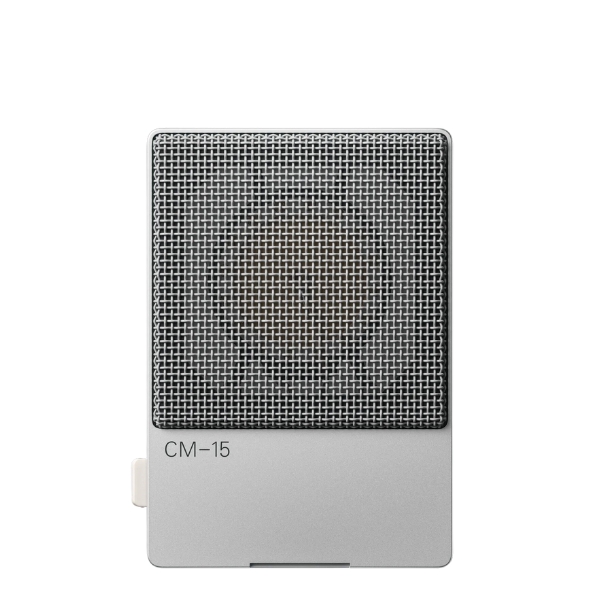
The CM-15 is a studio-quality large-diaphragm condenser in a portable-microphone body. Built-in preamps and AD converters bolster the amazing captures of which this mic is capable.
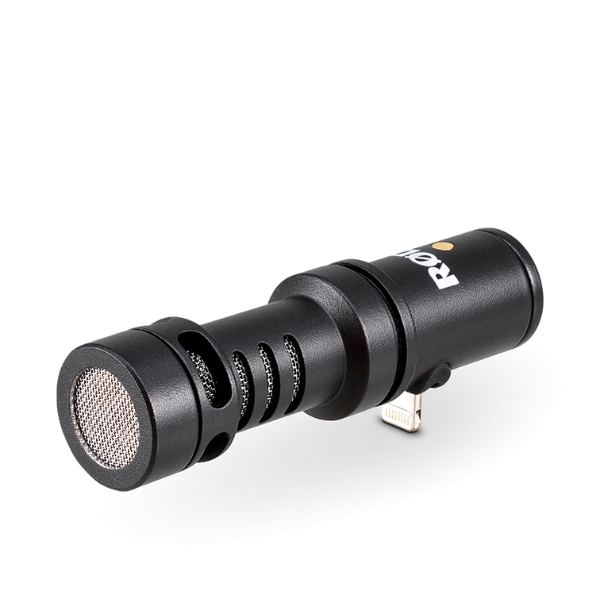
We love the utter simplicity of the Rode VideoMic Me-L, which brings Rode’s incomparable shotgun-mic tech to older Lightning-connectable iPhones in a foolproof format.
Best overall
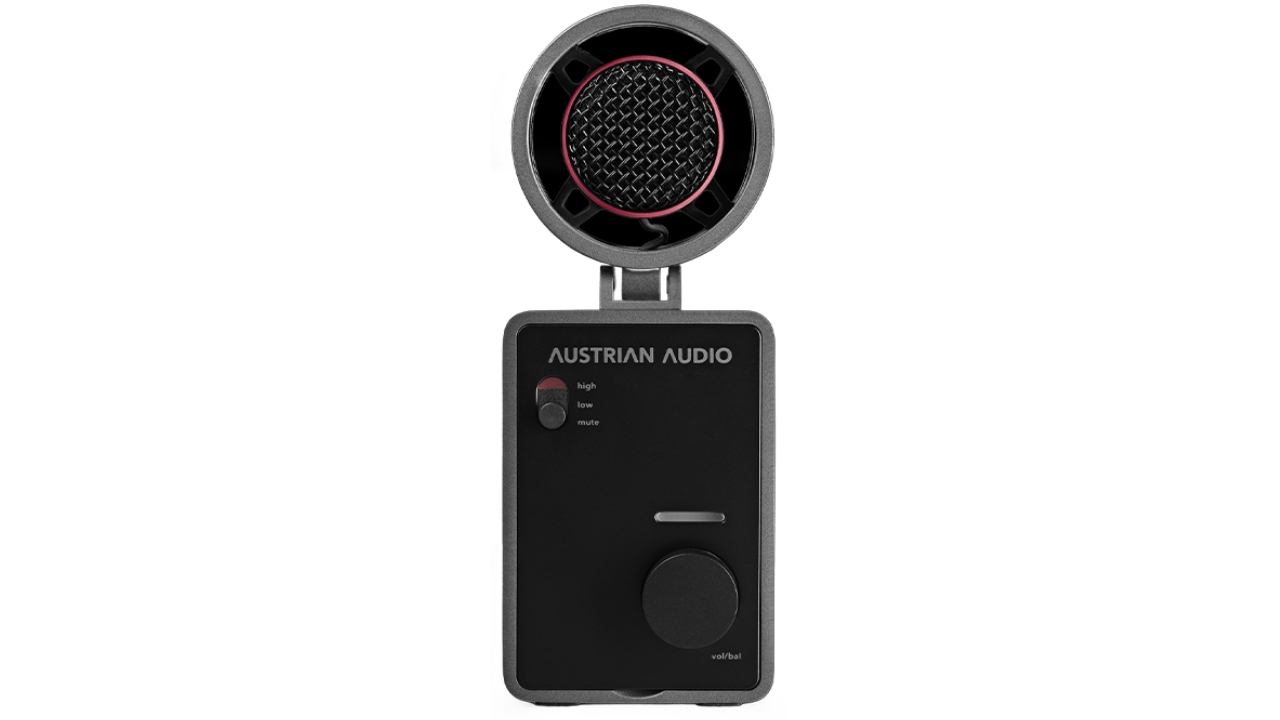
Specifications
Reasons to buy
Reasons to avoid
Austrian Audio has played something of a blinder with this new iPhone mic system. The MiCreator Studio, despite coming in under £200, offers a suite of utilities that gamely turn your iPhone into a fully-fledged recording suite of its own. This is a combined microphone and two-channel audio interface, which gives you additional ins and outs for peerless versatility.
The MiCreator Studio’s integrated microphone is a condenser, the diaphragm for which is suspended in a tiltable ring shock mount – a neat touch for both aesthetic design and practical purpose. The unit to which the microphone is attached boasts a monitor/balance knob, a toggle slider for mic gain, and two 3.5mm jack sockets, which provide a TRS ‘out’ and a TRRS ‘in/out’ respectively.
The Austrian Audio MiCreator family extends beyond this unit, with a lav mic and a twinsies standalone version of the condenser (the purchase of which gives you a great stereo pair for studio recording). The MiCreator Studio is a one-stop shop for recording, and lends itself well to practically any on-the-go recording requirement.
Read our full Austrian Audio MiCreator Studio review
Best wireless option
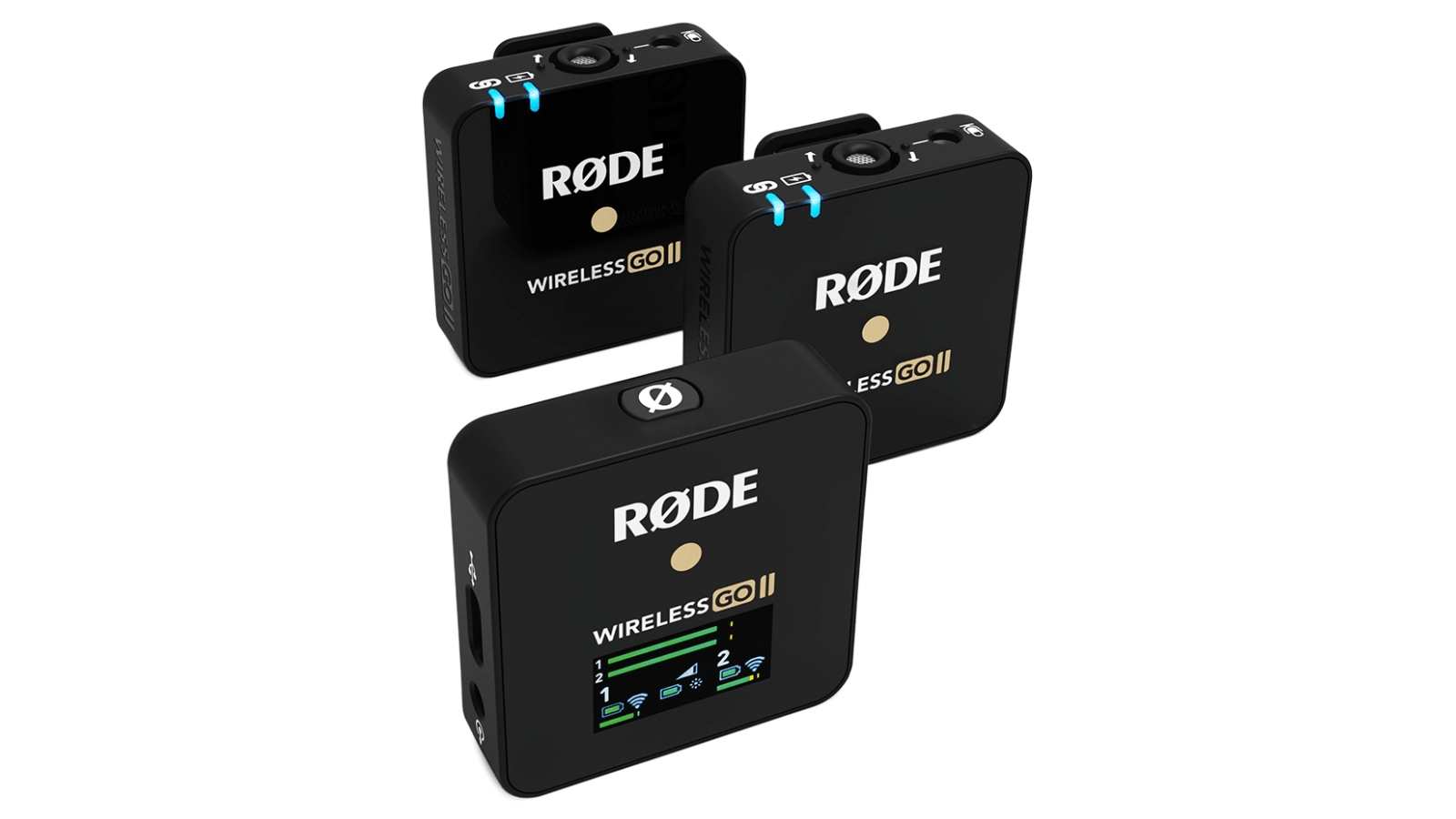
2. Rode Wireless GO II
Our expert review:
Specifications
Reasons to buy
Reasons to avoid
Rode is one of the best-respected names in microphone technology, so it figures that its premium broadcast mics will be a bit special. The Rode Wireless GO II combines a couple of discreet clip-on ‘pucks’ which transmit to a central receiver unit, which can be connected to your iPhone.
We’ve seen these used on location by the BBC, among others, and features like the safety-channel recording, which records a secondary version of your audio at a lower volume in case of noise spikes on your main clip, can prove a godsend when you’ve got only one chance to get it right.
For the standard bedroom vlogger, this set might prove a little over the top. Rode has a wider range which is well worth checking out, if that’s the case. But if your iPhone doubles up as a tiny pro-grade studio, then the Wireless GO II set should be high up your list for consideration.
Best for vlogging
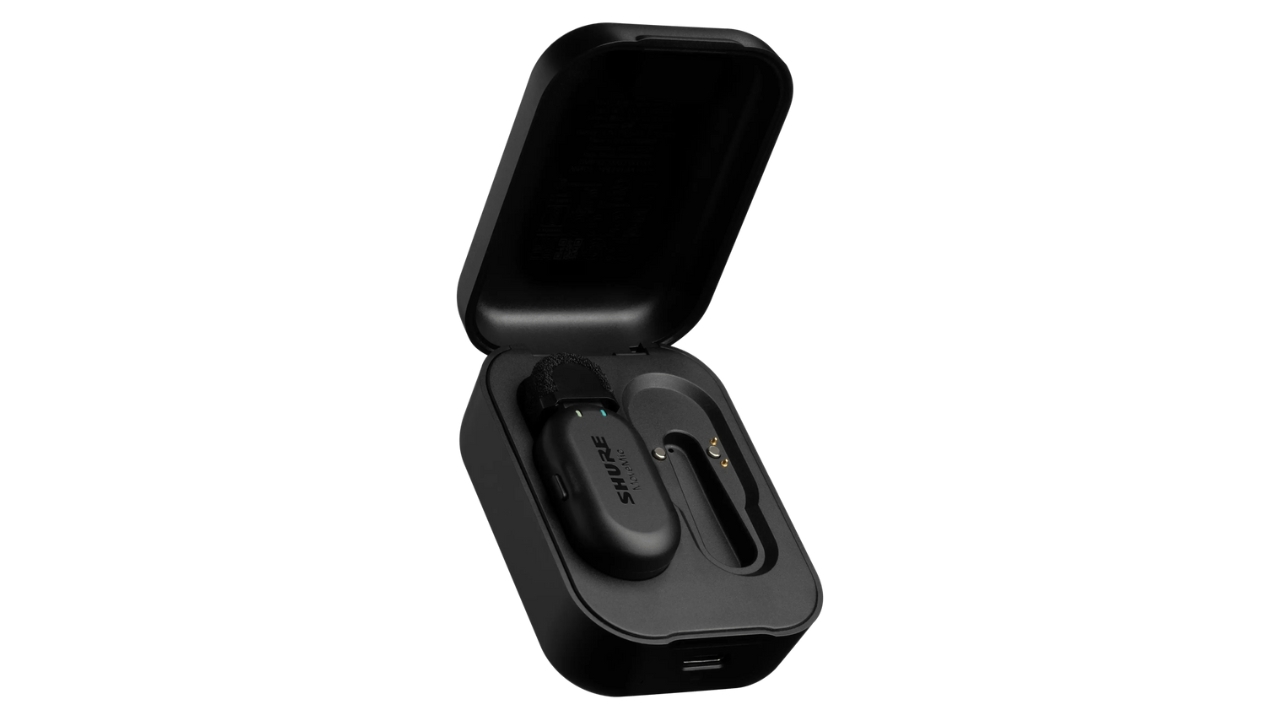
3. Shure MoveMic One
Our expert review:
Specifications
Reasons to buy
Reasons to avoid
Shure’s expertise in the wireless microphone field is inarguable at this point – and we’re lucky enough to see it bring that expertise to the consumer level with this new (and excellent) wireless lav microphone. The MoveMic One is a single-channel, and singularly small, wireless lavalier mic unit; unlike most of its ilk, it doesn’t require a receiver to work, instead being capable of delivering audio wirelessly to your iOS device via Shure’s proprietary MOTIV apps.
The small size is a huge win for in-the-field vlogging types, as the MoveMic One can be easily concealed in clothing without having to worry about hiding a receiver or any loose wiring. Another huge win comes in the eight-hour battery life, which gives a good deal of headroom for getting the right take.
There is a separate receiver you can buy from Shure, which enables you a bit more flexibility in what you use your MoveMic One with – but if you’re only ever shooting on your phone, you won’t need more than this for capturing your voice clearly.
Best for video

4. Sennheiser MKE 400 MKII
Our expert review:
Specifications
Reasons to buy
Reasons to avoid
What feels like a lifetime ago – back when the DSLR video boom first kicked off – Sennheiser's MKE 400 became the go-to budget shotgun mic for many videographers. Finally, after many, many years, Sennheiser has updated its ageing device with a shiny new model (actually, it’s matte black) – and guess what? It's now compatible with mobile devices, too.
The MKE 400 MKII is a rather nifty bit of kit. Admittedly, its chunky-yet-handsome form factor, complete with hot shoe plate, looks better perched on top of a DSLR than an iPhone, but don't let that put you off.
This mini shotgun mic is now equipped with a 3.5mm TRRS-compatible jack, which means it's simply a matter of running a short cable between it and the headphone socket on your iOS device. Of course, very few iPhones and iPads now have a headphone socket, so you'll probably have to source an inexpensive adapter – see more below.
Its super-cardioid shotgun pattern enables the MKE 400 MKII to home in on your subject, rejecting noise from everywhere but the centre front. This is a very useful quality to have when faced with capturing barely audible dialogue.
Two things we really love about the MKE 400 MKII are its slickly designed integrated shock mount and its windshield. Its low-cut filter is another welcome feature, one that's so characteristically Sennheiser.
This isn't a particularly expensive microphone, but you get the sense that Sennheiser's engineers have fought hard to ensure that it performs better than a mic at this price point really should. The only criticism we have is that the three-step gain sensitivity switch is a bit limited in use.
The MKE 400 MKII is also available in a mobile kit form with a bundled tripod and phone clamp.
Best for singing
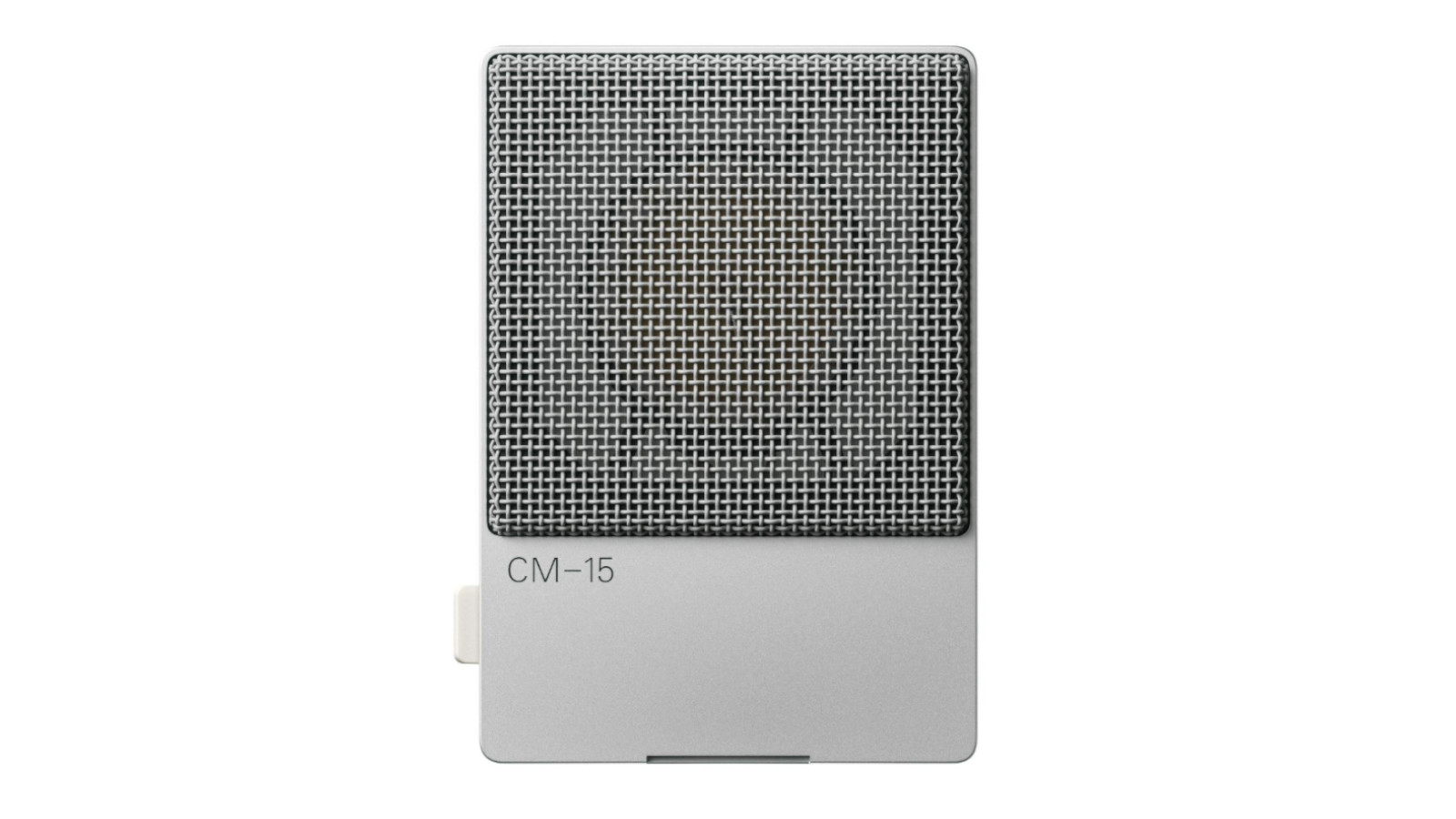
Specifications
Reasons to buy
Reasons to avoid
Teenage Engineering is at once one of the more forward-thinking companies in the audio space, and one of the more controversial. For every incredible idea it has comes a different kind of incredible: be it a strange design choice, ire-invoking product or an insurmountable price point. Regardless, the work it does is auspicious – an auspiciousness reflected in this stunner of a condenser microphone.
The CM-15 is a portable large-diaphragm condenser mic with endless connectivity possibilities. A mini-XLR out enables you to use it as a conventional, phantom-powered XLR in the studio; a TRS out enables you to hook it up to cameras and other external devices; a USB-C output enables you to connect it to (what else but) your iPhone – and all three outputs can be used simultaneously. iPhones with Lightning connectivity aren’t as friendly to connect with, though, so bear this in mind before you drop a significant sum on this.
The audio quality is simply without match, but that should not come as a surprise with any four-figure microphone, let alone a portable one. Bonuses like different mic voicings, a 10-hour battery for standalone usage, and a supremely clean internal AD converter sweeten the deal, particularly for committed or professional mobile recording enthusiasts looking to get the best from their vocalists.
Read our full Teenage Engineering CM-15 review
Best lightning
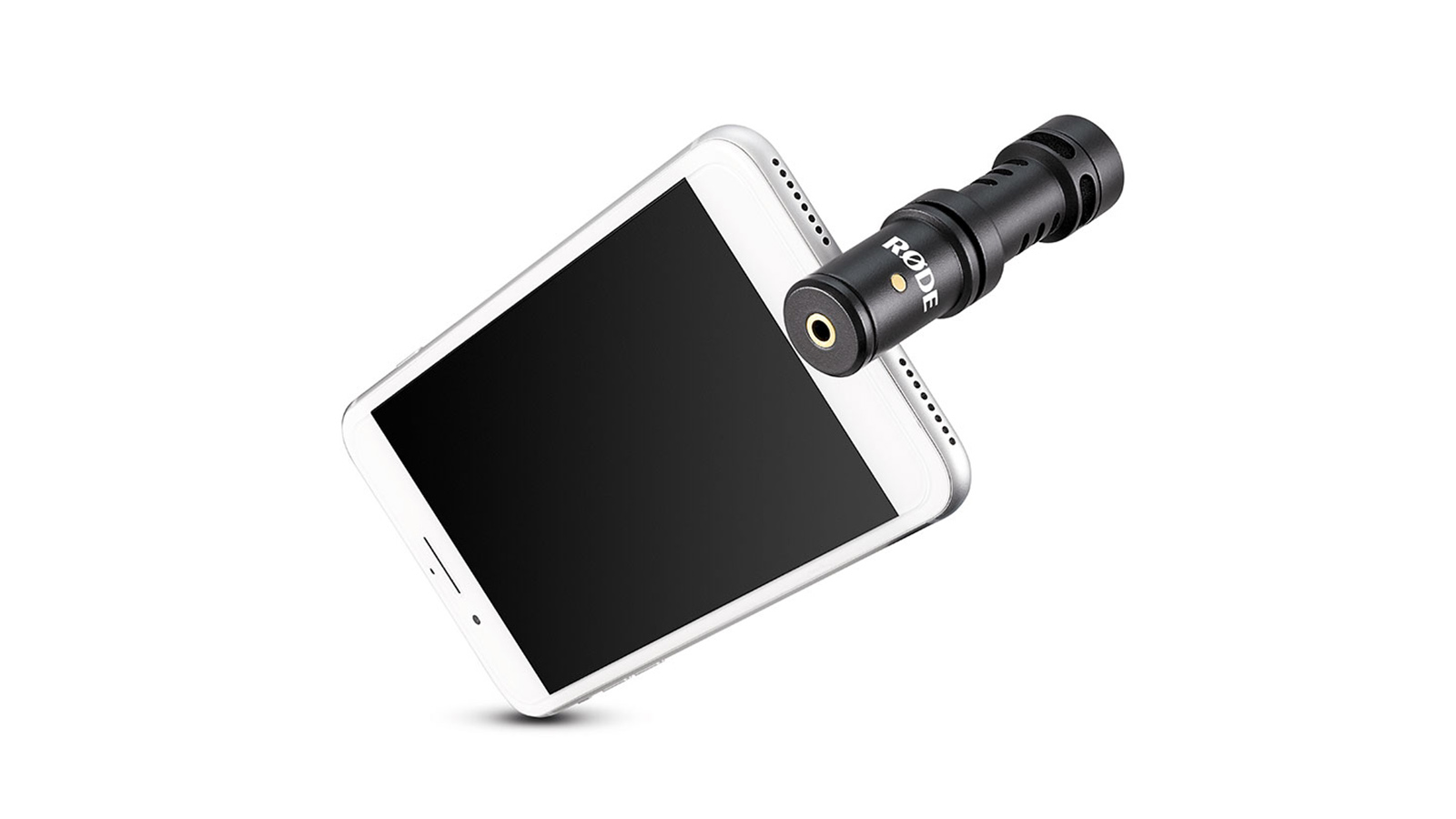
6. Røde VideoMic Me-L
Our expert review:
Specifications
Reasons to buy
Reasons to avoid
Rode is a well-regarded purveyor of all things microphone, and particularly well-regarded for its work in the peripherals space; if you’ve ever seen someone shooting video with an attachable shotgun mic, it’s probably a Rode. It’s only right, then, that Rode’s work in the phone-peripheral space is similarly sharp.
Rode's VideoMic Me-L is a small-diameter, 7cm-long shotgun mic that clips directly to your phone's Lightning port. There's a headphone socket around the back for monitoring, which is welcome, but no other controls. The Lightning port is a little limiting, and has even come to be a little outmoded, with Apple’s switch to USB-C – but Rode already has USB-C toting alternatives to this very same microphone.
As such, the Rode Me-L is the ideal budget shotgun mic for someone with an older iPhone, and no intention of upgrading in the near future. It’s well-priced, well-made and brilliant-sounding to boot; what more could you need?
More options...
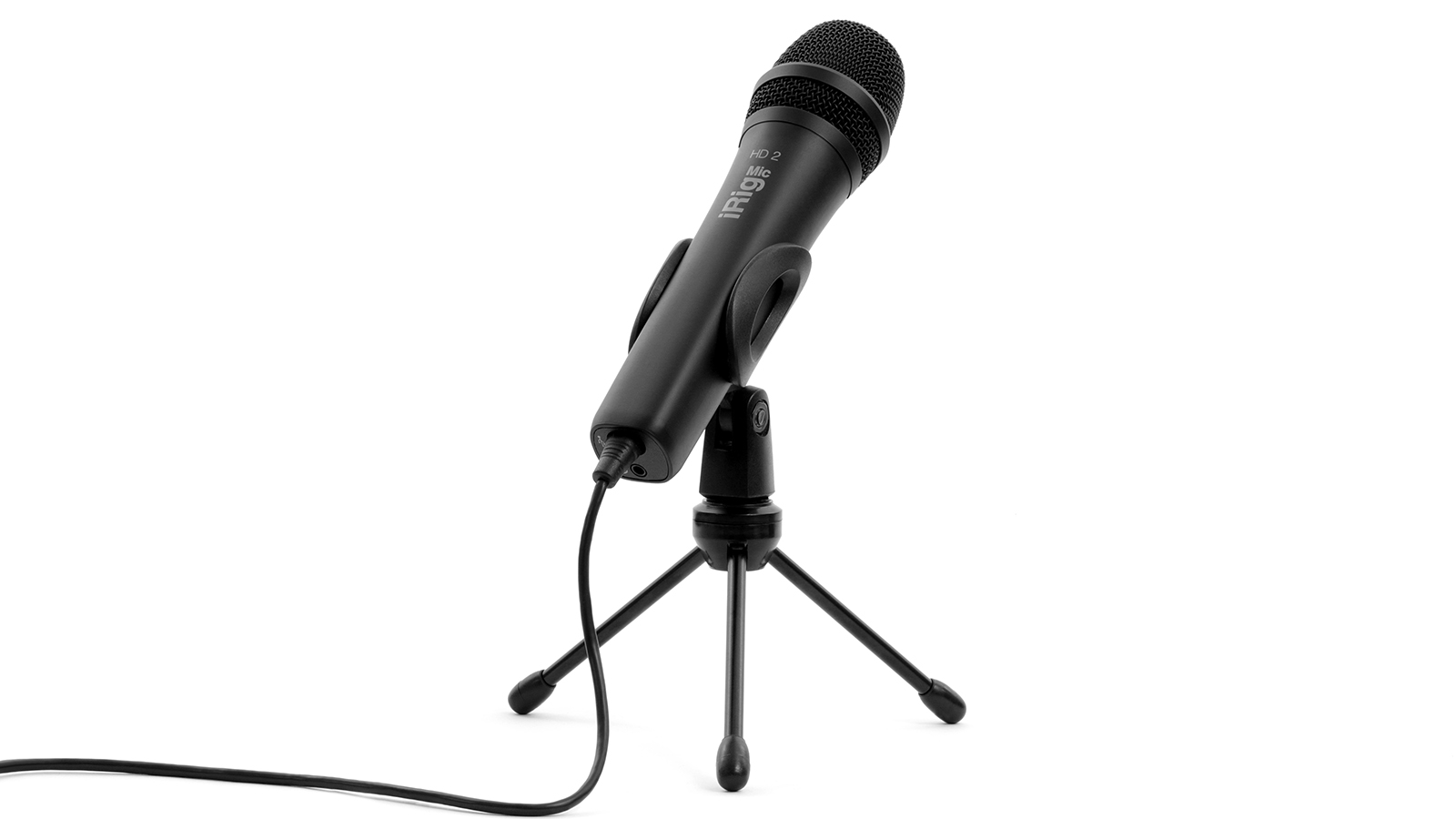
Specifications
Reasons to buy
Reasons to avoid
This is by far the most interesting microphone in this guide. Most of the others we've featured do much the same thing, but the iRig Mic HD2 has some unique features that may just make it the perfect iPhone mic for you.
IK Multimedia claims that it’s the only handheld digital condenser mic on the market that's compatible across iOS, Mac and Windows. It certainly looks more like a handheld mic than the assortment of oddly shaped appliances we often see clamped to vloggers' phones. Its silhouette is reassuringly familiar, and straightaway the robust metal housing feels right at home in the hand.
While we can't imagine many scenarios in which you'd want to perform live with a handheld microphone tethered by a USB cable to your phone, we do recognise the huge potential this mic has for broadcasters conducting live interviews. Having the option to pass a mic from host interviewer to guest interviewee and back again is a godsend for anyone striving for audio excellence.
Of course, if you're a studio-based musician, performer or podcaster, there's nothing to stop you placing it on a stand and using it just like any other microphone. IK Multimedia even includes a tripod with it.
Another feature that caught our attention is the bundled Mic Room modelling software that transforms the iRig Mic HD2 into one of a number of iconic microphones. But that's not all – in typically generous IK Multimedia fashion, this mic also ships with Ableton Live 11 Lite plus a host of audio processing plugins.
Freebies aside, the iRig Mic HD2 performs brilliantly straight out of the box – the sound quality is just superb for a mic at this very competitive price. It’s definitely worth considering if you need to get hands-on with a mic.
Read the full IK Multimedia iRig Mic HD2 review

8. Zoom iQ7
Our expert review:
Specifications
Reasons to buy
Reasons to avoid
The iQ7 has been around for some years now, but that's testament to how good this mic is. Ideal for a multitude of uses whether as a podcast microphone, for vlogging, or to seek out atmospheric ambient field recordings – this inexpensive little mic excels at capturing wider, more authentic stereo images.
Setup is easy, provided you're happy setting recording levels and stereo width. Just click the Lightning connector home – there's a removable shim for those who rock a case – set the mic orientation to either video or audio, and you're almost there.
Gain level is set using the big forward-facing dial, aided by a triple LED meter on the front panel. You can connect headphones to the iQ7's mini jack socket for monitoring, or use it as a line output jack.
The stereo-width switch is where things get interesting. Setting it to 90 degrees will ensure that the mic focuses predominantly on sounds coming from the centre of your scene, while selecting 120 degrees will see it picking up more ambience and stereo width. On the M-S setting, it’ll record a file that allows the stereo width to be tinkered with manually in Zoom's free Handy Recorder app.
Recording with the iQ7 requires slightly more forethought than if you were recording with its X-Y-equipped sibling the iQ6, but you’ll be rewarded with more control and a much-improved stereo image. For less than $/£/€100, it’s hard to fault this little gem.

9. Saramonic LavMicro U1A
Our expert review:
Specifications
Reasons to buy
Reasons to avoid
Sometimes, we get carried away in the belief that we need a big, impressive microphone that costs the price of a kidney, when, in fact, all we really need is a cheap, humble lavalier.
Pin the discreet LavMicro U1A to your lapel and your voice will sound distinct and clear. Move and it’ll move with you, so your voice will still sound distinct and clear. Buy an extension cable and you'll be able to walk a fair distance away from your iPhone or iPad and still be heard as if you were standing right next to it – distinct and clear.
What's special about the Saramonic LavMicro? Er, nothing really. Interesting features? Hmm, none. It just does what it's supposed to do, without fuss or ceremony (although Saramonic does include an alligator clip and a pouch).
We concede that the quality probably wouldn’t be good enough for Adele's next album but, trust us, it's plenty good enough for broadcast and vlogging.

10. Movo Wireless Mini Duo
Our expert review:
Specifications
Reasons to buy
Reasons to avoid
With iPhones being used more and more as complete videography solutions, it makes sense that we’d see more wireless lavalier mics reach the market. The Movo Wireless Mini set is a great example, offering up two clip-on mics with a decent battery life and fairly broad range, which connect wirelessly thanks to a Lightning-equipped receiver device that connects to your phone.
Pairing is instantaneous, meaning you can be up and running within seconds of making a connection. Bass is, as you’d expect from such a small mic, pretty non-existent, so you can forget capturing deep velvety baritone speeches, but as an inexpensive entry point, we think this is a neat little set.
FAQs
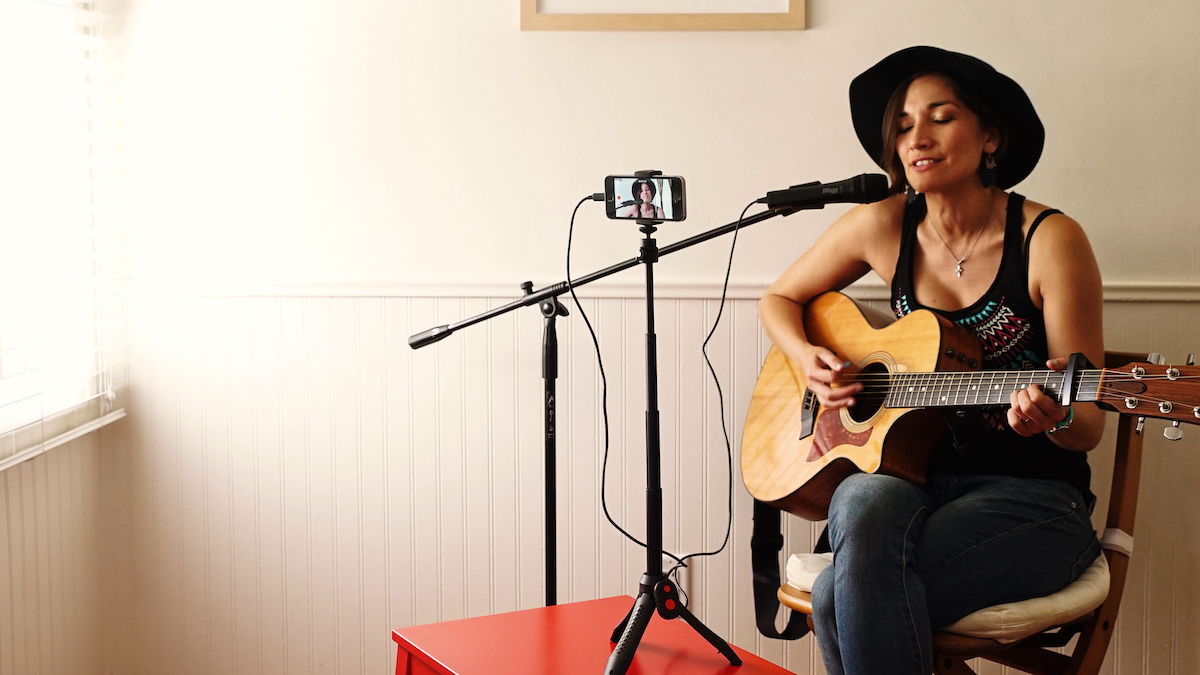
Are iPhone mics worth it?
We expect a lot from the microphones in our iOS devices. One minute we're taking a voice call from work and the next we're trying to send a voice note to make our evening’s arrangements. Realistically or not, we expect the audio to be pristine – but more often than not, we're disappointed.
The reason we're disappointed is because we have unrealistic expectations. No microphone can perform well under all conditions; it's physically impossible. Instead, Apple has very sensibly equipped its iOS devices with omnidirectional (omni) condenser mics. These are very sensitive, picking up sound from all sides, while naturally overcoming the proximity effect – a (usually) undesirable low-end boost when close-recording.
These characteristics make them superb for recording voice calls, when your mouth is very close to the device, but they are less than ideal for isolating a subject from a busy background. An omni-condenser mic can be especially sensitive, too, which is why your subject will often be drowned out in a sea of ambient turmoil.
In addition, if you're using Apple's basic Voice Memos app to record audio, be aware that it relies on auto-gain to set recording levels. It tends to boost every faint ambient sound it picks up, substantially increasing background noise. Fine for capturing basic ideas, but nigh-on unusable in a digital audio workstation (DAW) like Garageband or Logic.
Fortunately, investing in a separate microphone and setting gain levels manually can overcome all of these issues.
What is the pickup pattern of a microphone?
Every microphone is designed with a specific polar pattern (aka pickup pattern), which simply explains the direction (and area) from which it will capture audio. Different recording scenarios and applications call for different patterns, so carefully consider how you plan to use your iOS device.
As we've already established, omnidirectional microphones – which have a very broad pattern – aren't ideal for recording in all situations, but that doesn't mean we should disregard them completely. They work exceptionally well for singing, especially when close-miked, which makes lavalier mics a great choice. These are the tiny mics broadcasters often wear, usually clipped to a lapel or other item of clothing close to the talent's mouth. Because they're close miked, they're unlikely to pick up much background noise, and that omni pattern means it's not strictly necessary for them to be accurately pointed at the sound source. This makes lavaliers much easier to place and conceal. Equip your iPhone or iPad with a lavalier – either wired or wireless – and you’ll be able to record excellent spoken audio, making them ideal for podcasts or outside interviews.
Cardioid mics are more focused. They're most sensitive to sounds from the front, capturing little from the sides and rear. This makes them a good choice for semi-isolating vocals or other sound sources from ambient noise. They’re susceptible to the proximity effect – that boost in bass frequencies as the mic is brought closer – but this can be desirable depending on the result you’re trying to achieve. They’re particularly useful for capturing one or two subjects from a few feet away, or for recording distant soundscapes.
Super-cardioids and hyper-cardioids have increasingly narrow patterns, which makes them ideal for isolating your talent from their surroundings, provided they don't move sideways, beyond the mic's pattern.
Figure 8 mics are only really found in mid-side arrays (more of which below). They’re bidirectional, picking up sound from the front and rear but rejecting sound from the sides. That said, slightly confusingly, in a mid-side configuration they are orientated to pick up sound from the sides and reject from the front and rear.
Typically, mics for iPhones and iPads will be omni or cardioid, because those patterns cover most applications well. Don't be under the illusion that a narrow polar pattern will enable you to successfully pick out a distant sound source, especially vocals. It doesn’t work like that. Always try to mic reasonably close to your talent, or you'll end up with an unusable amount of noise. For more advice, read our guide to recording the very best vocal performance.
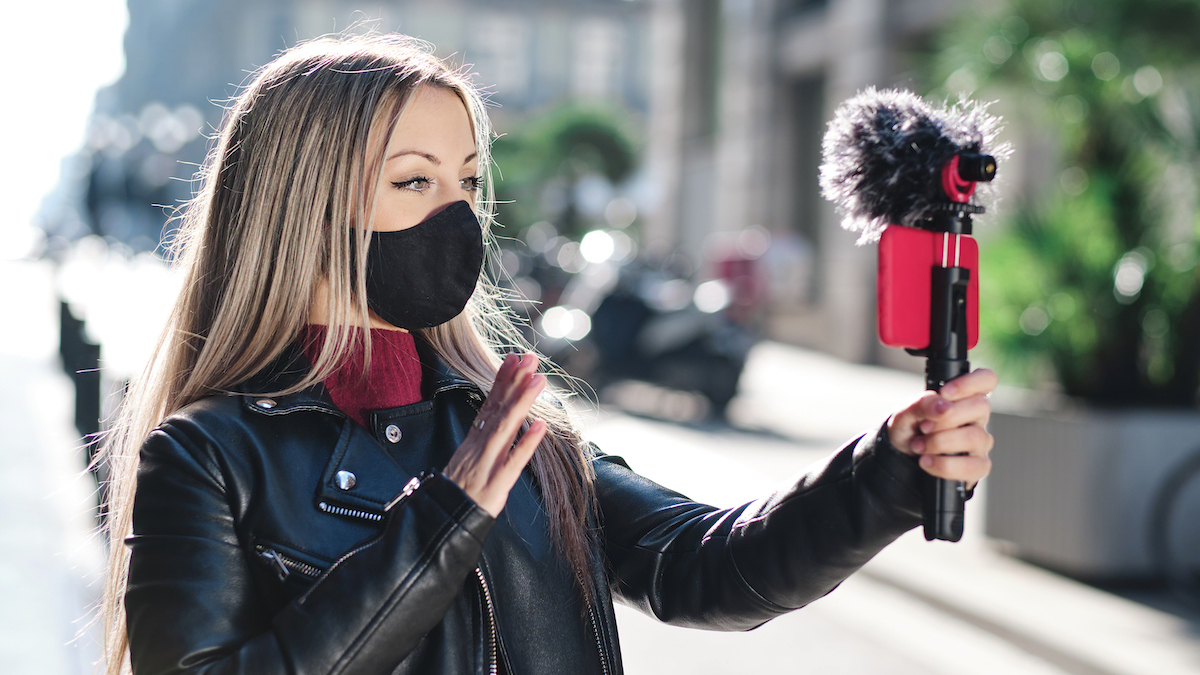
What is the capsule in a microphone?
If your iPhone microphone accessory features just one capsule (a single mic), then it's almost certainly going to be an end-address, which means you just point it directly at your subject or talent.
Some microphones boast dual capsules. These are usually in an X-Y configuration but occasionally you'll find them in a mid-side configuration. Which is better? An X-Y configuration will see two microphone capsules set up diagonally opposing one another, most often at 90 degrees. It provides recordings with an excellent stereo image and is easy to use – imagine a straight line bisecting the two mics, and aim that at your talent. It provides little stereo width control, although some products may allow you to increase or decrease the angle of the capsules.
Mid-side arrays comprise one cardioid mic pointing directly at the action (the mid), together with a second mic, usually in a figure 8 pattern, picking up sounds from the sides. Balancing the input of the two mics, either pre- or post-production, will enable you to increase the stereo image, or focus more on the talent. In a nutshell, a mid-side array will give you more control over the ambience and directionality of your recording, but they’re a bit more of a faff. If you just want to point and shoot, with little concern for choosing settings, go for X-Y.
Which is better condenser of dynamic mic?
Choosing between condenser and dynamic mics isn’t so much a matter of ‘better’ or ‘worse’, but more a matter of your specific use-case. However, in the world of iPhone mics, dynamic mics are nigh-impossible to come by anyway. This is because condenser mics are active microphones that take power and return a clear, robust audio signal with considerable dynamic range. Dynamic mics, meanwhile, are passive microphones that would require active circuitry in order to reach a useable input level.
Dynamic mics are by no means less useable than condenser mics, but it’s simply more practical for third-party iPhone mics to be condensers; if you’re desperate to use something dynamic in your own set-up, you’ll want to use an audio interface that can receive XLR inputs – more on which shortly.
Can I connect a microphone to my iPhone?
Apple has historically been a little difficult with respect to the connection of third-party devices, the Lightning connector of old being a particular sticking point for getting things like audio interfaces to work properly. Though plenty of portable phone microphones were Lightning-compliant, Apple’s switch to the USB-C standard is a godsend for audio peripherals. More devices are compatible with this standard, giving you more choice over which microphones you’d like to use. You’re still, however, chained to USB-C connection as opposed to an audio connection like XLR – unless…
Can I use XLR mic with iPhone?
While it makes perfect sense to use either USB or Lightning-equipped microphones with your iOS device, there's no getting away from the fact that the pro standard is still XLR. This is a very mature standard that uses robust, balanced, noise-cancelling cables – if you want to invest in a top-end mic, it’ll almost certainly have an XLR connector.
If you have your heart set on using an XLR-equipped mic (perhaps you already own one), then how do you go about using it with your iPhone or iPad?
The answer is to use an audio interface. Once again, compatibility can be an issue, but interfaces that appear to work well with many iOS devices include the PreSonus AudioBox iOne and iTwo, the Arturia MiniFuse and AudioFuse, the Roland Rubix series, the Roland GO:MIXER PRO-X and GO:LIVECAST, the IK Multimedia iRig series and the Apogee Symphony. This is by no means an exhaustive list, and once again we cannot stress how important it is to check compatibility with your particular Apple product.
Please don't mistake our cautiousness for negativity. The combination of an M4 iPad Pro, a USB-C-equipped interface and an XLR mic, such as the superb Shure SM7B, will provide you with a powerful rig that surpasses the capabilities of many desktop studios. Still, it's worth investing a little time to ensure that everything plays nicely together.
How we choose the best iPhone microphones
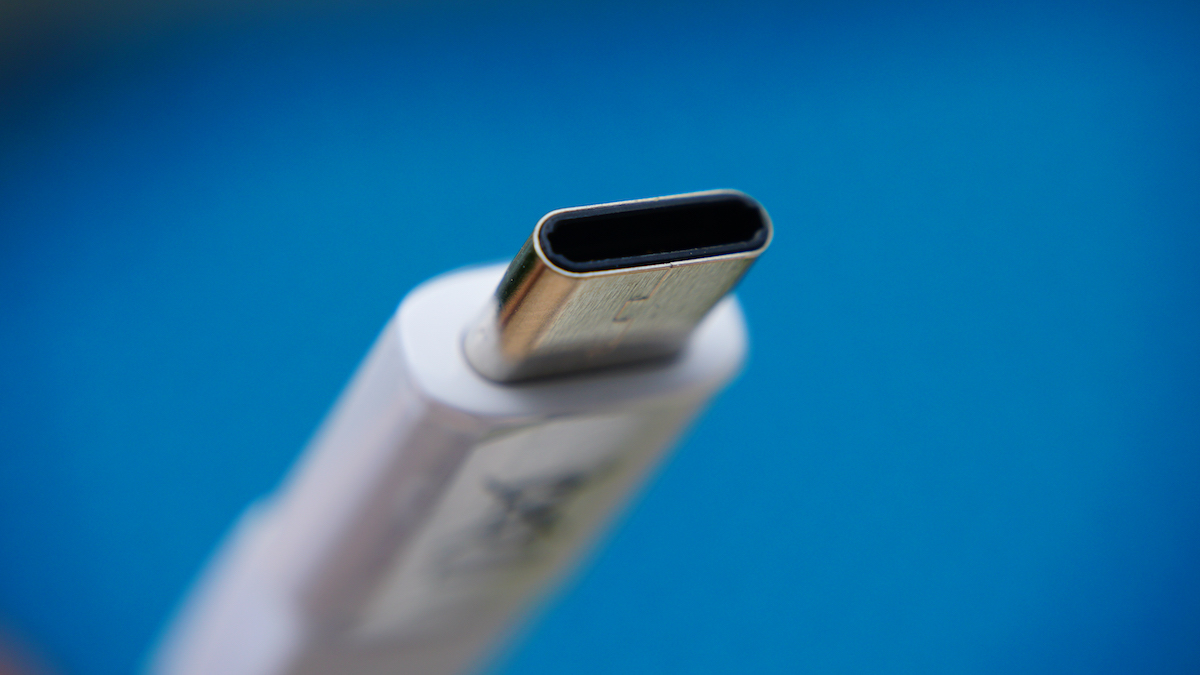
At MusicRadar, our writers are dedicated to the pursuit of pristine audio quality, so we understand that using an iPhone microphone is now a totally valid way to capture audio in the modern age. When it comes to pinpointing the best iPhone microphones, our team leverages their experience from recording studios, live performances, and a genuine love for the details of sound reproduction.
Selecting an iPhone microphone involves a meticulous examination of factors such as clarity, sensitivity, ease of use, and adaptability to different recording situations. We've rigorously tested various microphones, putting them through their paces in real-world scenarios to ensure they meet the diverse needs of musicians, content creators, and audio enthusiasts.
Whether you're capturing impromptu musical ideas or recording professional-grade content on your iPhone, our guides cover a range of microphones, from budget-friendly options to premium choices. Each recommendation in our guide has earned its place through thorough testing, ensuring that whether you're in the studio, on stage, or out in the field, you can achieve exceptional audio quality.
Find out more about how we test music gear and services at MusicRadar.
Related buyer's guides
MusicRadar's got your back
- Best phones for musicians: top smartphones for music production
- Level up your audio with the best camera microphones
Want all the hottest music and gear news, reviews, deals, features and more, direct to your inbox? Sign up here.
When Simon's childhood classical guitar teacher boasted he 'enjoyed a challenge', the poor man had no idea how much he'd underestimated the scale of the task ahead. Despite Simon's lack of talent, the experience did spark a lifelong passion for music. His classical guitar was discarded for an electric, then a room full of electrics before Simon discovered the joys of keys. Against all odds, Simon somehow managed to blag a career as a fashion journalist, but he's now more suitably employed writing for MusicRadar and Guitar World. When not writing or playing, he can be found terrifying himself on his mountain bike.
- Matt McCrackenJunior Deals Writer
- Chris Corfield
- James GrimshawFreelance writer
